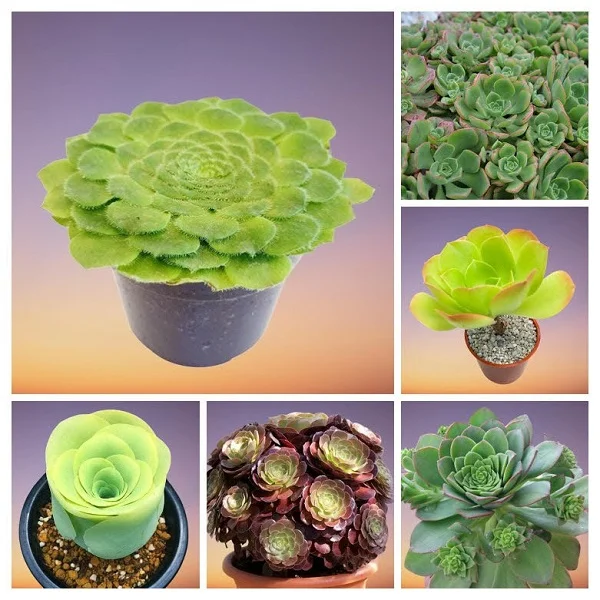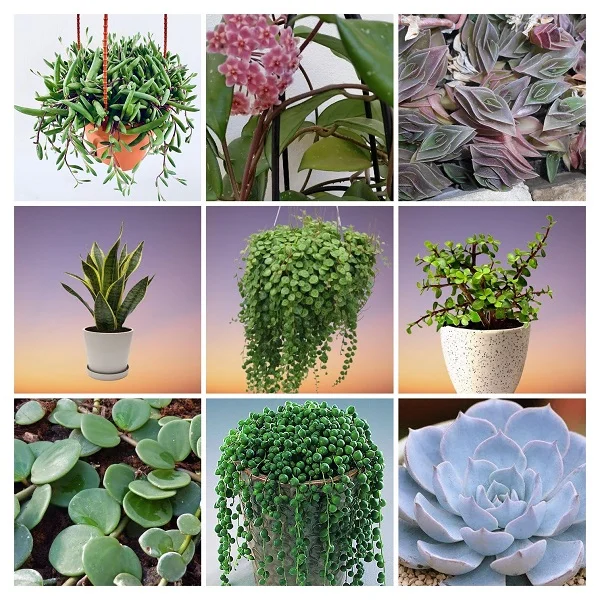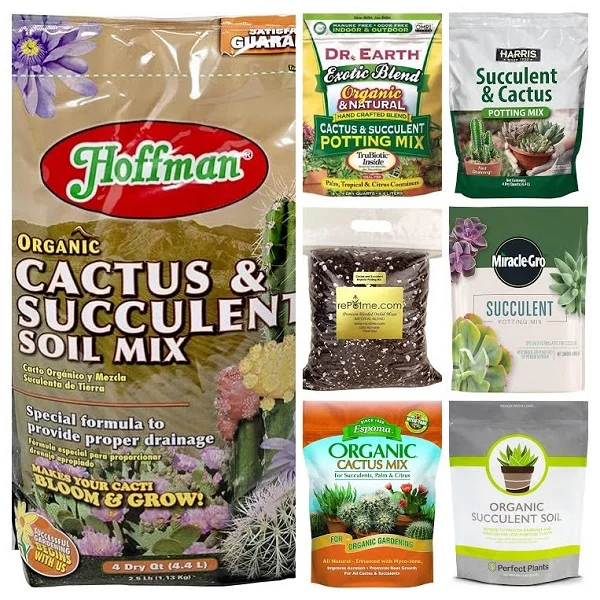18 Aeonium Types with Names and Pictures
Some links in this post may be affiliate links
Aeonium varieties commonly called Tree Houseleeks are stunning plants with succulent, shiny, spoon-shaped leaves typically arranged on a basal stem in a dense spreading rosette.
Tree Houseleeks are monocarpic plants which flower only once after which they die leaving behind many offsets or offshoots from which they can be reproduced.
Aeonium Types can be low-growing plants like Aeonium tabuliforme (Flat-topped Aeonium or Saucer Plant) or large trees like Aeonium arboreum (Tree Aeonium) which grow up to a height of 6-8 feet.
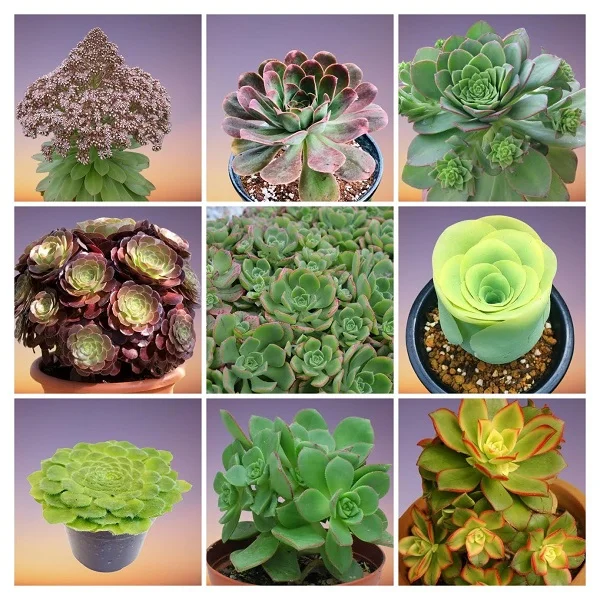
Aeonium Plants have a small root system as they store water in their succulent leaves which makes them highly prone to root-rot if grown in soggy potting medium.
Tree Houseleeks like a Mediterranean climate which is not too hot, not too cold, not too dry. In hot and dry conditions which occur in very hot summers, they may go dormant.
Aeonium Succulents can be grown as ornamental indoor or outdoor plants in a sunny place in warm climates or as container plants in climates with harsh winters as they are not cold hardy.
There are about 35 Aeonium species which are mainly native to the Mediterranean climate in Canary Islands while some are found in Madeira, Cape Verde, Morocco, in East Africa (Ethiopia, Somalia, Uganda, Tanzania and Kenya) and Yemen.
If you would like to add these stunning plants to your collection, we have herebelow a list of 18 Aeonium types to make it easier for you to make your selection.
18 Aeonium Succulent Types for Your Home
Popular Aeoniums varieties are Aeonium tabuliforme, Aeonium tabuliforme 'Variegata', Aeonium arboreum, Aeonium arboreum 'Zwartkop, Aeonium arboreum 'Albovariegatum', Aeonium diplocyclum among others.
1. Aeonium tabuliforme
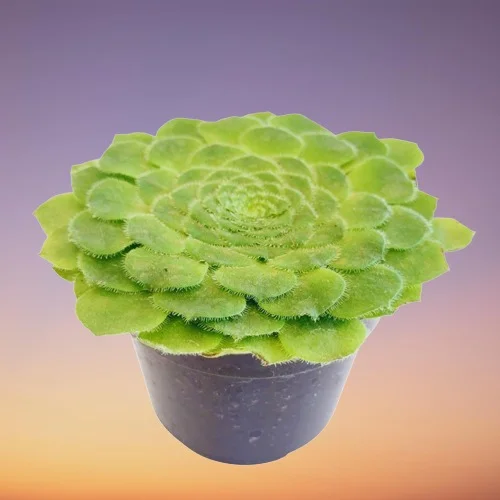
Aeonium tabuliforme commonly called Flat-topped Aeonium, Saucer Plant or Dinner Plate Aeonium is a low-growing plant which is only about 2 inches high and up to 1.5 feet wide.
Flat-topped Aeonium produces a mass of fleshy, hairy, bright green leaves in flat rosettes on short unbranched stems, usually on vertical surfaces.
Saucer Plant is native and endemic to Tenerife in the Canary Islands where it grows on moist, north-facing cliffs and ledges at low altitudes.
The species name, 'tabuliforme' is Latin for 'flat' or 'table shaped' in reference to the flat-topped rosettes. Aeonium tabuliforme has gained the Royal Horticultural Society's Award of Garden Merit.
2. Aeonium tabuliforme 'Variegata'
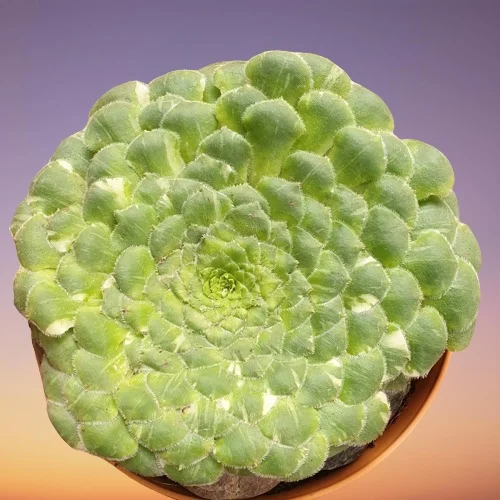
Aeonium tabuliforme 'variegata' is a cultivar of Aeonium tabuliforme which bears fleshy, hairy, cream-edged leaves in flat rosettes on short unbranched stems.
Variegated Dinner Plant Aeonium grows best in brighter light than the green variety to enhance bright leaf color.
3. Aeonium arboreum
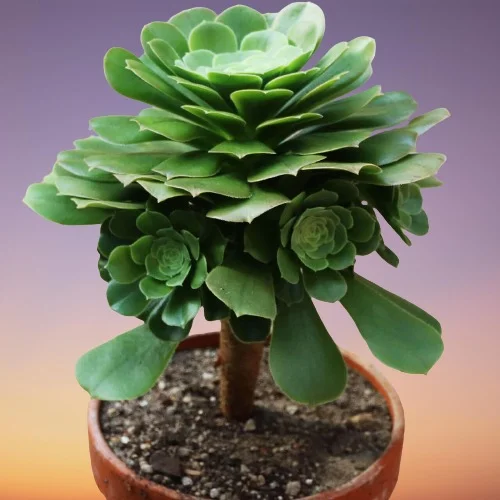
Aeonium arboreum commonly called Tree Aeonium is a large, tree-like species which can grow to a height of 6-8 feet.
Aeonium arboreum bears obovate to oblate-lanceolate leaves, pointed towards the apex and wedge-shaped at the base, in flattened rosettes which are of 0.5-1.0 feet wide.
Aeonium arboreum is endemic to the western Canary Islands of Tenerife, La Palma, El Hierro, La Gomera and Gran Canaria. Outside its native habitat, the plant is invasive and it is recommended for growing in containers to control spread.
4. Aeonium arboreum 'Zwartkop'
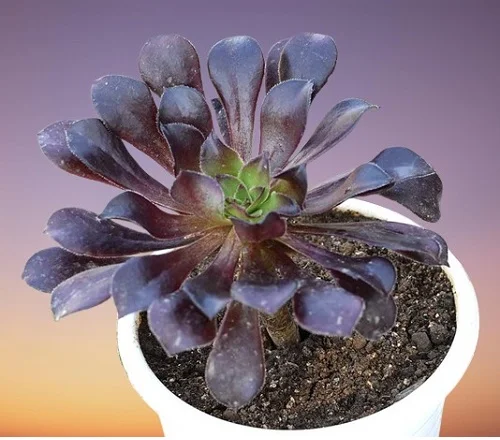
Aeonium arboreum 'Zwartkop' ('Schwartzkopf') also called Aeonium Black Rose is a purple cultivar of Aeonium arboreum which has gained the Royal Horticultural Society's Award of Garden Merit.
It can withstand more direct sunlight than other varieties to enhance the leaf color; the stronger the sunlight, the darker it becomes.
5. Aeonium arboreum var. atropurpureum
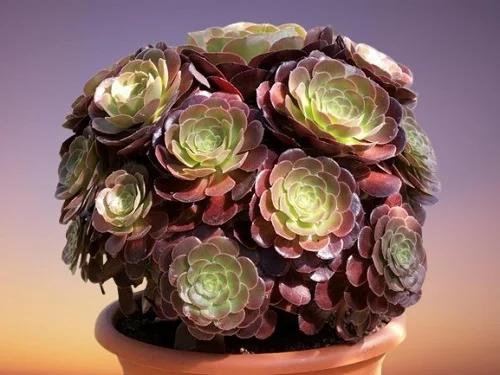
Aeonium arboreum 'Atropurpureum' commonly called Black Tree Aeonium or Black Beauty is a cultivar of Aeonium arboreum which has almost black-purple rosettes at the ends of arching branches.
Black Tree Aeonium can grow to a height of 3-5 feet on a woody stem on which are large rosettes with green centers. In bright light the leaves become darker, almost black.
6. Aeonium arboreum 'Albovariegatum'
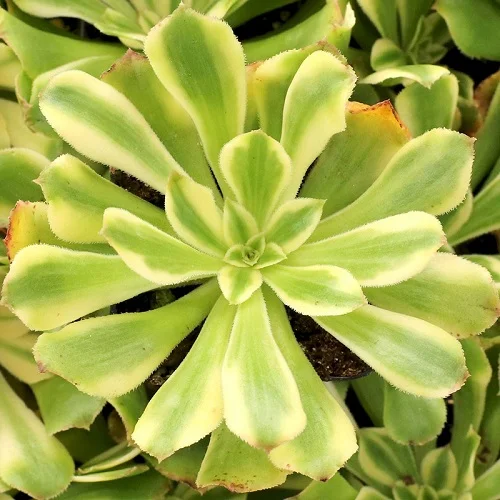
Aeonium arboreum 'Albovariegatum' is a variegated cultivar of Aeonium arboreum which has cream-edged, serrated leaves with pinkish tones in very bright light.
It can grow to a height of 3 feet on a woody stem on which are large rosettes about 1.5 feet in diameter.
7. Aeonium diplocyclum
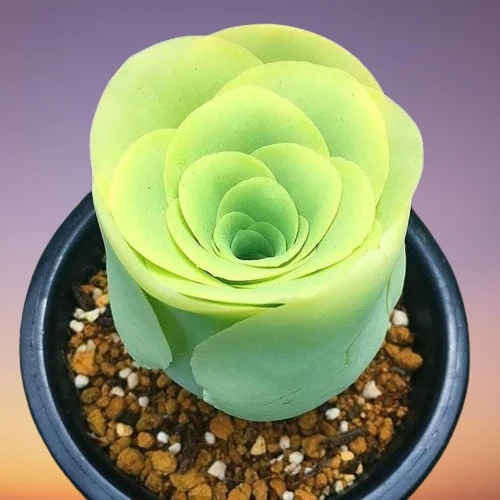
Aeonium diplocyclum formerly Greenovia diplocycla bears a rosette of pale green leaves covered with a powdery bloom about 6-8 inches wide.
In summer (dormancy stage), the inner leaves are erect, tightly closed and the rosette closes up like a cup and are covered with dry beige-red leaf sheaths.
The rosette in Aeonium diplocyclum remains solitary and never produces offsets unlike in many other varieties.
8. Aeonium aureum
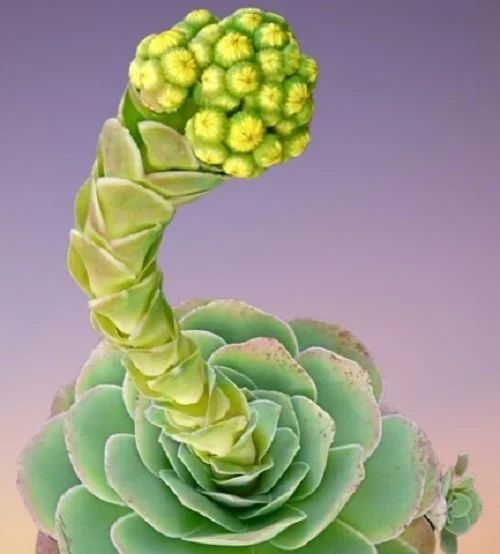
Aeonium aureum formerly Greenovia aurea bears grey-green, fleshy, tightly packed leaves on very short stems and occur as several leaf rosettes on a stem.
In dormancy stage (summer), the inner leaves are erect, tightly closed and the rosette closes up like a cup and are covered with dry beige-red leaf sheaths.
An inflorescence of bright yellow flowers is produced on a tall, erect leafy stem in mature plants from late winter to spring.
9. Aeonium decorum
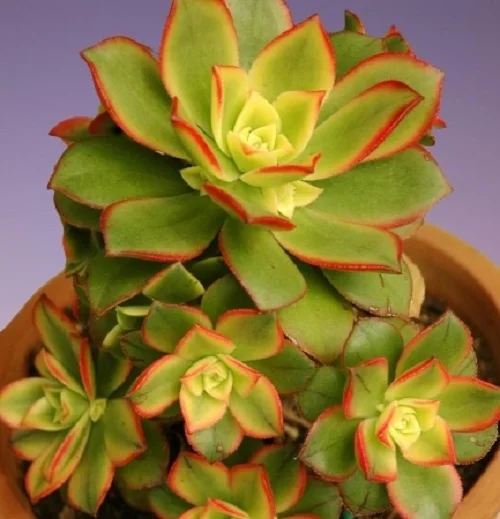
Aeonium decorum commonly called Green Pinwheel bears dark green to yellowish-green leaves with reddish margins in rosettes on thick drooping branches.
The inflorescence in Green Pinwheel comprises of small, star-shaped, whitish, often pinkish, or reddish flowers and appears in late spring or summer.
Aeonium decorum is a small, succulent shrub which grows to a height of 1-2 feet and about 1-2 feet wide and offsets easily to produce a spectacular cover ground.
10. Aeonium ciliatum
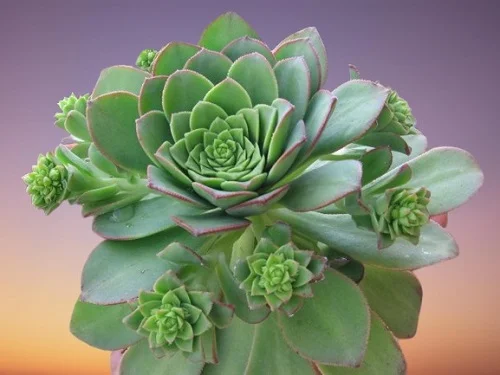
Aeonium ciliatum produces large, dark-green leaf rosettes with reddish margins about 8 in. wide on woody branches which become top-heavy causing the branches to bend.
Aeonium ciliatum is a small, succulent shrub which grows to a height of about 2 feet and about 1.5 feet wide.
The inflorescence in Aeonium ciliatum is dome-shaped about 8 in. tall with whitish-green flowers and appears in early summer.
11. Aeonium haworthii
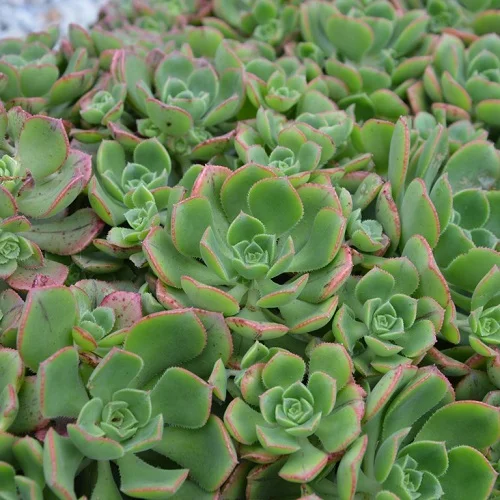
Aeonium haworthii or Haworth's Aeonium a popular small shrub which has gained the Royal Horticultural Society's Award of Garden Merit. as has the cultivar 'Variegatum'.
Haworth's Aeonium is a much branched shrub which grows to a height of about 2 feet and bears flat rosettes of obovate, green or yellowish green leaves.
The leaves are triangular or diamond- or spade-shaped, often reddish edged and covered with curved eyelashes along the edges. The inflorescence is of cream-colored, pointed flowers appearing in spring.
12. Aeonium haworthii "Kiwi'
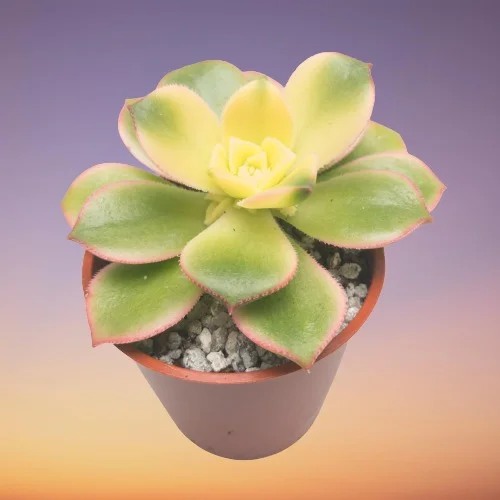
Aeonium haworthii 'Kiwi' is a cultivar of Aeonium haworthii with cream-yellow variegated leaves which has gained the Royal Horticultural Society's Award of Garden Merit.
The rosette is cream-colored in the center but the leaves gradually change to a soft green towards the edges. In bright light, they develop a rose-red ribbon.
Aeonium haworthii 'Kiwi' grows to a height of 1-2 feet, about 1-2 feet wide and offsets easily. The inflorescence comprises of bright golden, star-shaped flowers which appear in summer.
13. Aeonium hierrense

Aeonium hierrense commonly called El Hierro Giant Houseleek bears whorls of strongly ciliate, fleshy, green leaves with pinkish or reddish margins and fine hairs.
El Hierro Giant Houseleek, native to eastern and central parts of El Hierro island of Canary Islands, grows to a height of 5 feet and the rosettes are up to 2 feet in diameter.
The inflorescence is dome-shaped, about 2 feet tall, made up of whitish flowers with the middle part often being pinkish and appears in spring.
14. Aeonium gomerense
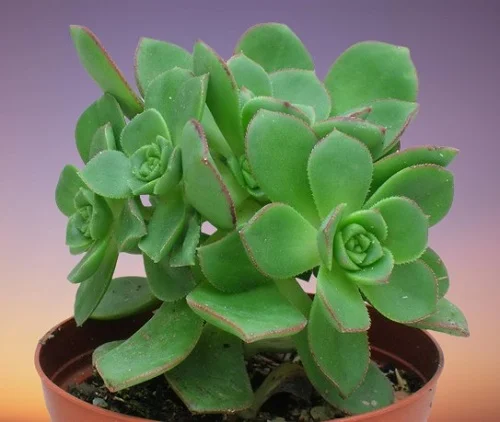
Aeonium gomerense has flattish rosettes of obovate to oblanceolate, green leaves with reddish leaf margins, about 1 foot wide and are borne on smooth branches.
The whitish-greenish flowers appear in a large, egg-shaped cluster on 8 inches tall stalk in late winter and spring.
The species name, 'gomerense' is in reference to its native habitat, the La Gomera Island; one of the Canary Islands, where it occurs at elevations between 1,640 and 3,610 feet above sea level.
15. Aeonium canariense
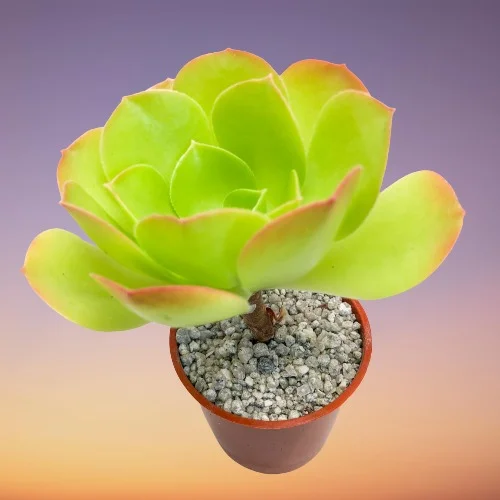
Aeonium canariense commonly called Canary Island Aeonium bears large rosettes of leaves close to the ground and tall spikes of yellow flowers arise from the center of the rosette.
The fleshy, soft, fuzzy leaves become tinged with reddish pink along the edges when the plant is grown under bright direct sunlight.
Canary Island Aeonium is endemic to the north of the island of Tenerife in the Canary Islands, where it is found growing on dry slopes and cliffs at about 1300 metres above sea level.
16. Aeonium appendiculatum
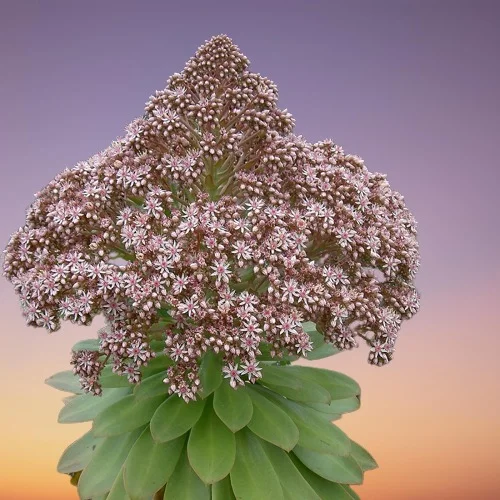
Aeonium appendiculatum has large, long, dark-green leaves with pointed tips and fire-orange tips and edges when grown under bright sunlight.
The plant is a 3 feet shrub whose large, spectacular inflorescence exhibits a fantastic array of pink and white flowers which are attractive to bees and butterflies.
17. Aeonium leucoblepharum
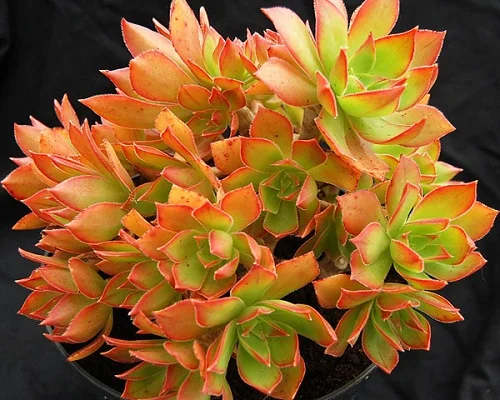
Aeonium leucoblepharum bears spoon-shaped, pointed, yellowish-green to dark green leaves with a strong central stripe, which may develop pinkish colour on exposure to strong sunlight.
This native of mountain regions in Yemen, Ethiopia, Sudan, Kenya and Uganda with branched sprawling or hanging stems can grow to a height of 6-7 feet.
The flowers are star-shaped, yellow, occasionally reddish are borne in ovoid or dome-shaped clusters on up to 6 inches long stalks and appear in spring.
18. Aeonium nobile

Aeonium nobile also called Noble Aeonium is a succulent plant which bears a large solitary rosette, about 2.5 feet wide, of thick fleshy yellowish-green leaves with reddish or brownish leaf margins.
Aeonium nobile is native to the island of La Palma in the Canary Islands, where it is found growing on dry slopes and cliffs at altitudes up to 800m above sea level.
The large inflorescence arises on a red stalk as a flattened capitate head with many small, whitish-reddish, star-shaped flowers which appear from late winter to spring.
